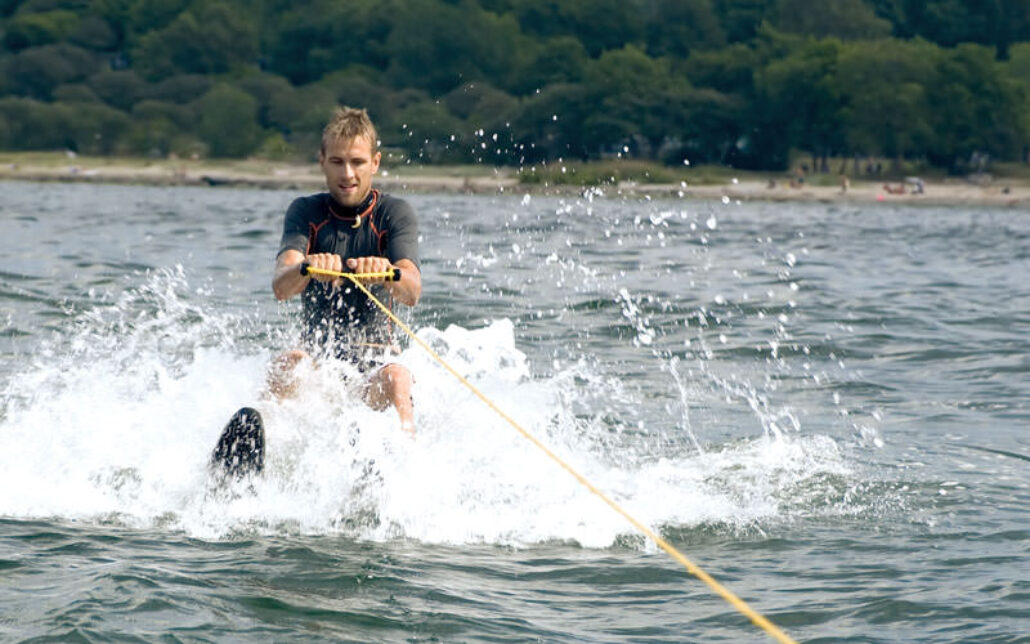A soccer player’s leg slips out from under her, or a collision on the court stretches a basketball player’s leg in a quick, violent moment. Movements like these make the hamstring vulnerable. We explain the risk factors for hamstring damage, and list injury symptoms that should trigger a call to a Summit sports medicine specialist.
We expect more power from our quadriceps muscles on the front of our thigh than from the hamstring muscle group on the back of our upper leg, but the hamstring still plays a vital role in leg movement. Certain activities put hamstrings at extra risk. Knowing those risk factors can help you protect this important muscle group.
Your hamstring is a large group of muscles on the back of each thigh. The most common injury occurs when the leg is stretched abruptly—while the hamstring muscles are in the act of contracting. The combination of a sudden leg stretch while the hamstring is contracting can put enormous stress on this muscle group, causing injury in muscle or tendon tissues. In severe cases, the hamstring can be torn or separated from the anchoring bones at the pelvis or lower leg.
Activities or sports that involve high-speed striding create the greatest risk of injury. Hamstring damage is the most common injury among soccer players, but soccer is far from the only sport that stresses the hamstring. Track and field, football, basketball, baseball, marathons—even Frisbee, dance, or brisk walking—can cause hamstring injury.
“In Minnesota,” notes Summit Orthopedics sports medicine surgeon Dr. James Gannon, “you can add another sport to this list. The number one cause of hamstring ruptures requiring repair in the land of 10,000 lakes is water skiing. Trying to get up on one ski is very hazardous to your hamstring.”
Minnesota water-skiing injuries aside, athletes in soccer, basketball, and track are particularly vulnerable to hamstring injuries. These sports require players to leap into action suddenly and explosively. When a player sprints abruptly after a ball or another player, the hamstring contracts violently to check the power of the quadriceps. Collisions or falls that force the hamstring into an extended stretch during these instants of fierce muscle contraction create a perfect storm of elevated injury risk.
A number of factors can make the hamstring more vulnerable to injury.
- Improper warm-up before strenuous activity. When hamstring muscles are tight, they are more vulnerable.
- Strength imbalances in the leg. When the quad muscles along the front of the thigh are significantly stronger than the hamstrings, the imbalance can increase strain on the hamstring.
- When muscles are tired, they are less able to handle strain, and more susceptible to injury.
- History of previous injury. Prior damage may weaken the hamstring, reducing its ability to withstand stress.
- Participation in certain sports. Soccer, basketball, football, and track athletes are particularly vulnerable. Dancers, brisk walkers, and adolescent athletes are also at higher risk. Young athletes who are still growing are vulnerable because bones grow faster than muscles. Bone growth can pull muscles tight so that they are less able to withstand athletic stress.
Usually, hamstring injuries are not hard to detect. They can be accompanied by the following symptoms:
- Sharp pain or a popping sensation in the buttock and upper leg, usually during physical activity
- Significant bruising along the back of the leg 24 to 48 hours after the injury
- Discomfort or pain while walking and sitting
- Weakness when bending your knee—which may signal a complete hamstring rupture
If you think you may have hamstring damage, Summit Orthopedics’ sports medicine physicians have the expertise to evaluate your injury and design the treatment plan needed for recuperation and safe return to your favorite activities.
Summit Orthopedics offers comprehensive sports medicine expertise
From Olympians to pro athletes to kids in youth sports and those that just want to be more active—Summit Orthopedics delivers expert care by fellowship-trained sports medicine physicians. If you are recently injured or concerned about ongoing pain, Summit Orthopedics sports medicine specialists have the expertise to evaluate your discomfort and develop a plan to quickly and safely help you get back to being active.
Start your journey to stronger, healthier athletic condition. Find your sports medicine expert, request an appointment online, or call us at (651) 968–5201 to schedule a sports medicine consultation.
Summit has convenient locations across the Minneapolis-St. Paul metro area, serving Minnesota and western Wisconsin. We have state-of-the-art centers for comprehensive orthopedic care in Eagan, MN, Vadnais Heights, MN, Plymouth, MN, and Woodbury, MN, as well as several additional community clinics.

